When was the last time you tasted real, authentic and village-based Armenian food?
In case you have actually never encountered this astoundingly diverse cuisine and what it has to offer, you’re most definitely missing out on a whole new category of gastronomical arts.
Armenians, as you might have guessed, are somewhat more than just proud of their love of eating. This leads to the inevitable urge they constantly feel to praise, promote and advertise their cuisine, whilst always slightly gatekeeping the recipes. Which, frankly speaking, sounds and is pretty fair to me.
A typical Armenian dish is prone to be supplied with a bit of everything: spice and seasoning, meat, vegetables, dairy, and usually bread to eat with. However, regardless of how you choose to cook in the comfort of your own house, being Armenian means indulging your cuisine deep into your culture and acknowledging it as a part of your identity. Because, after all, whatever forms and shapes your national heritage in such depth, must be remembered, appreciated, and passed on to the next generations.
And since media in the modern world has the capacity to help us share everything we consider valuable, it is my greatest pleasure to list out my top 10 absolute favorite dishes of Armenian origin and dig a little further into their roots.
10. Zhingyalov hats
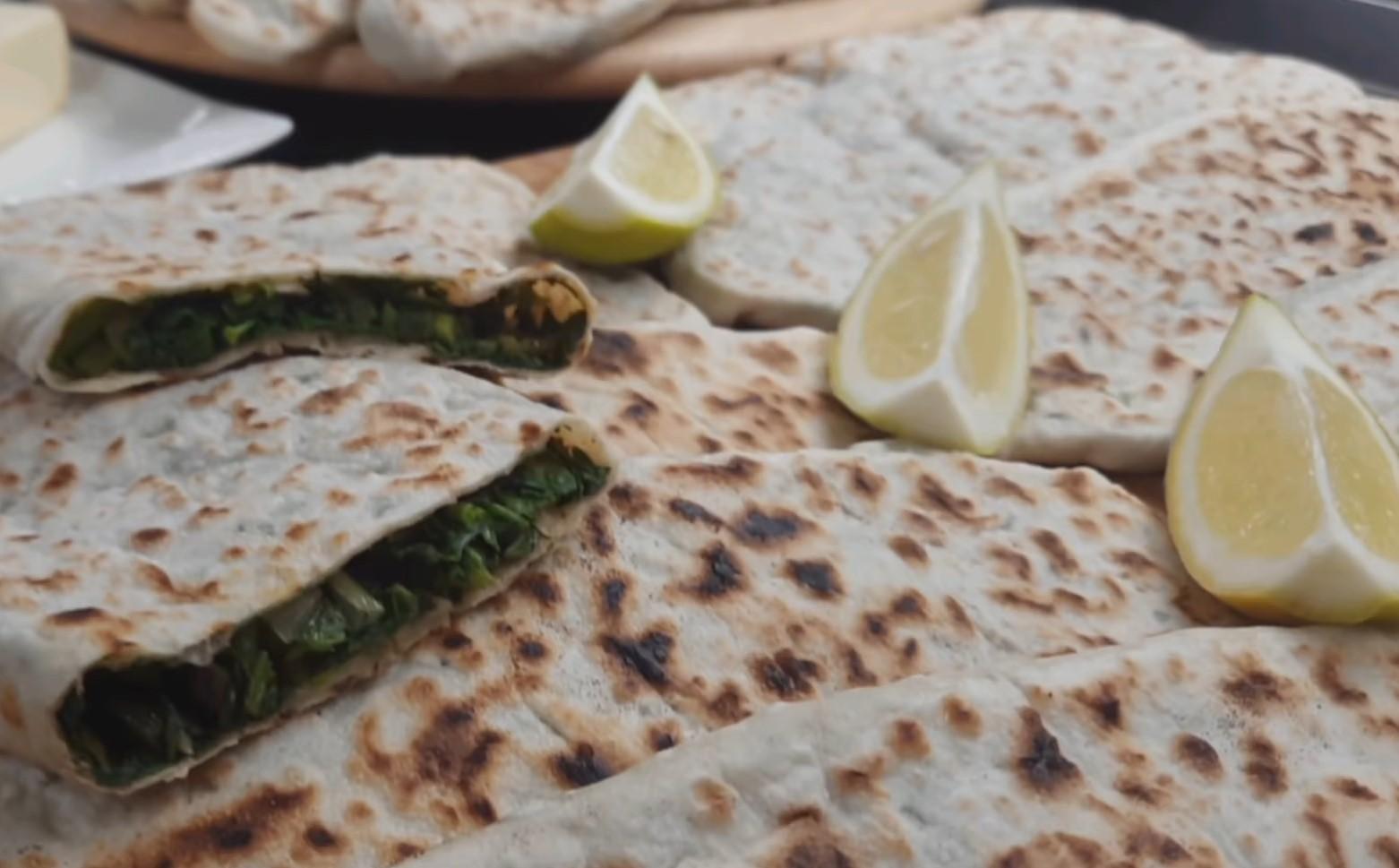
One of the dishes that holds the hearts of almost all Armenians is Zhingyalov hats. The yeast that serves as a wrapping for this dish, is simple flatbread, typically thin enough to be considered see-through. A delicious layer of stuffing consisting of 10 to 20 types of diced and oiled wild and cultivated herbs, is warped inside of the thin layer of bread and served with beer or wine.
This composition of fresh greenery and bread that Armenians call Zhingyalov hats is mostly native to the regions of Syunik and Artsahk. Moreover, if you anyhow happen to be a passerby in those areas, the first thing you will be recommended to do is trying this unique and widely loved dish.
9. Tjvjik

As impossible as it seems to pronounce, tjvjik or tzhvzhik (տժվժիկ) is somewhat of a “celebrity” dish in Armenian culture. Due to its profoundly unusual ingredients and original taste, its often seen on the menu of attractive tourist restaurants.
The dish itself was named after the process of its preparation. Tjvjal (տժվժալ) is the Armenian word for the sound of hissing, which happens during the frying stage. What’s there to fry? A liver or even lungs. For this one, you have a variety of choices between pork, beef, chicken, and lamb. Additionally, any kind of offals would decorate your plate with a delicate seasoning of parsley.
8. Harissa

Moving on to a meal that falls between soup and porridge in its consistency, I can definitely confirm that this particular repast is one of the most commonly cooked dishes in the daily life of an average Armenian.
Harissa is mainly the combination of wheat semolina and well-boiled chicken, beef, or pork meat. The result should be a light-colored viscous mass. Some prefer to melt a layer of butter and place it on top, however, those kinds of adjustments are purely up to your preference.
Earlier in history harissa was considered a festive meal and its preparation came close to the notion of a ritual. The ingredients were mashed together and left in the oven overnight for proper merging, hence a meal big enough to fill out a meter-tall pot was waiting for the family in the morning.
Harissa was initially cooked in the city of Vagharshapat, a former capital of Armenia, so its safe to say that the homeland of this dish is the current region of Armavir.
7. Ishli kufta

One of the “prides” of the entire Armenian population is Ishli kufta. You can never hear enough versions of it or recipes. This cutlet is served as a main dish all over Armenia, but despite the country being relatively small in area, the meal differs from city to city.
To generalize, ishli kufta is a fragrant beef cutlet stuffed with minced meat and nuts. Bulgur is a necessary attribute, normally spread on minced meat. Cutlets like those would traditionally be deep-fried or boiled in a saucepan. If you do not mind the taste of onion in your food, you should definitely add some thin-cut onions for a more intense flavour.
The entire thrill with this dish was started off from Western Armenia and later on became insanely popular between almost all Caucasian countries.
6. Spas
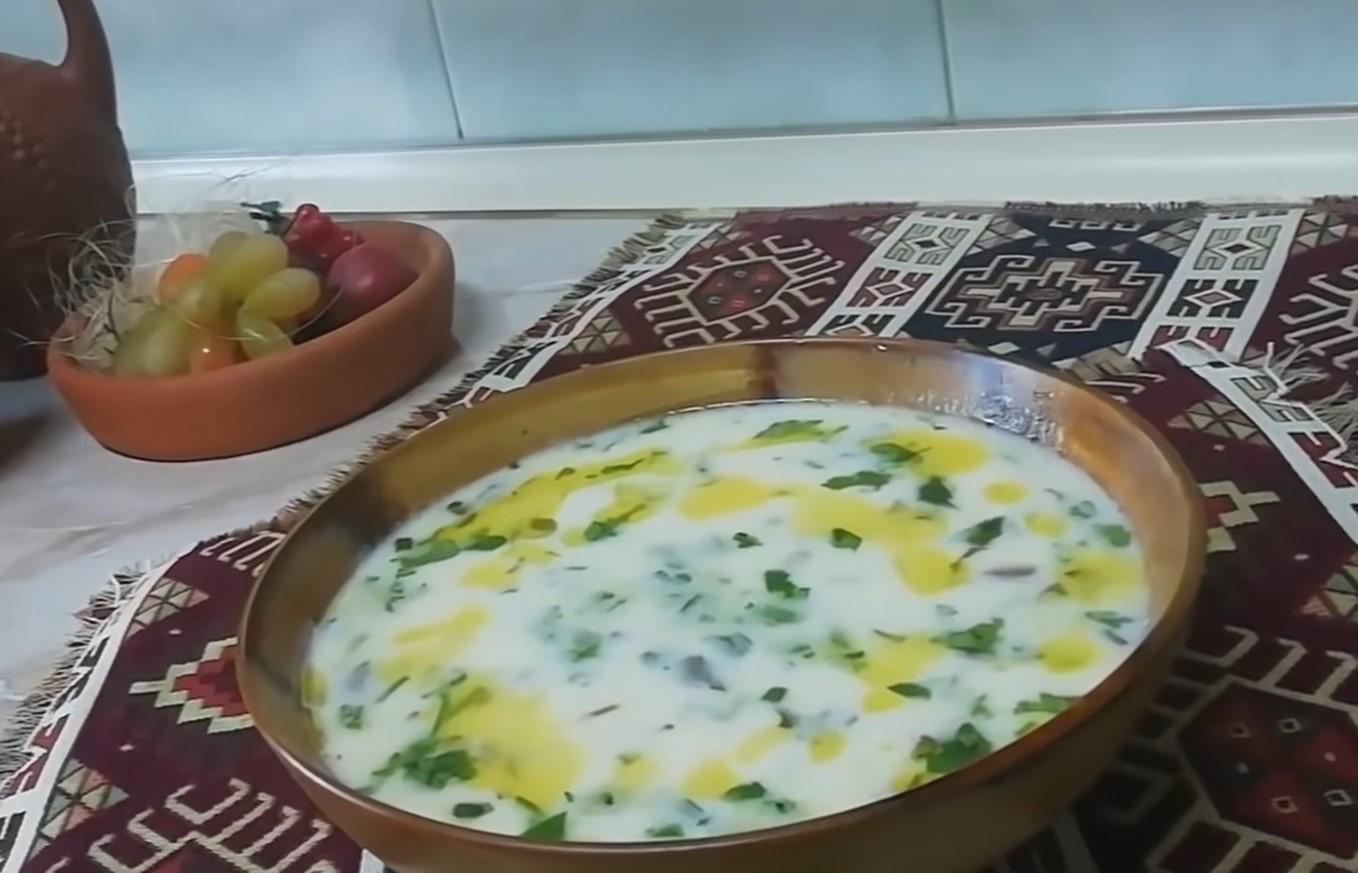
Spas is easily the soup of my childhood. As someone who has been enjoying it for over a decade, I cannot possibly name another yogurt (matsun) based meal in the world that comes close to the tender taste of spas. We all grew up with it and we all love to smell it being cooked in our houses.
Spas is the solitary kind of soup in the Armenian culture that does not include, meat, vegetables, rice or even broth. Its base is simply yogurt and hulled wheat. This dish is regularly perfected with herbs such as coriander or spinach, but I personally adore to have it with well shredded fresh mint․
The name of this soup, however, holds a wholesome backstory. In the 19th century, years after the Russo-Turkish wars, numerous units of the Kazak army were permenantly stationed in Transcaucasus under the inhumane whether conditions of heavy snow and temperatures reaching 30 degrees below zero. The soldiers were undoubtedly freezing and hungry in the rough Armenian mountains. When a group of them finally found a corner of comfort and safety in a local house of Armenians, they were serves a white soup previously named tanapur by the natives. With a full stomach the Kazak soldiers told the owners of the house that they have been simply saved. The Russian word for it is «спас» (spas), hence the currently used name for the soup.
5. Ghapama
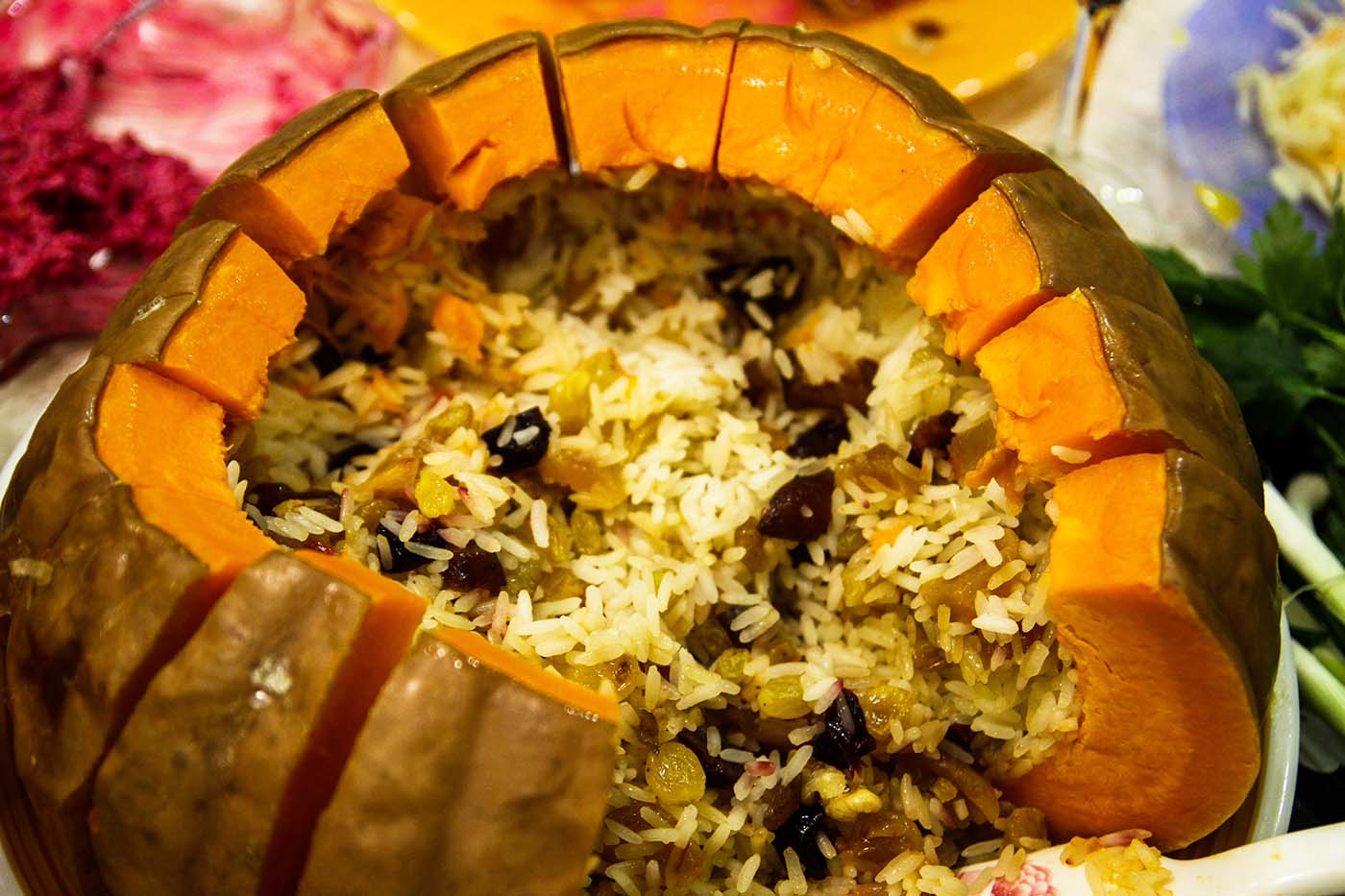
The sweetness of enjoying ghapama with your family on Christmas Eve is something very specific to Armenians. This externally beautiful pumpkin dish is a widespread decoration of dinner tables. It is prepared by removing the guts of the pumpkin and filling it out with boiled rice and dried fruit. You can literally stuff it with whatever comes to mind. From almonds to apples, cornels and apricots, even plums with raisins, everything is acceptable.
The “cherry to our pie” for this dish is definitely some honey and cinnamon. If you ever find yourself around an Armenian Christmas table, do not miss out on this one.
4. Basturma

Basturma is fundamental proof indicating that Armenians cannot, for the life of them, imagine a living without meat. To be short, it is a highly seasoned and air-dried cured beef.
Versions of basturma can definitely be found in a multitude of Mediterranean countries. The Armenian prototype, however, is closer in resemblance to Italian bresaola and is traditionally served as an appetizer.
3. Gata

Hopping back to the sweet aspects of Armenian food, it’s just about time to talk about Gata. This peculiar kind of pastry is often categorized or labeled as sweet bread.
Gata comes in all shapes, sizes, and decorations. Therefore, it’s actually pretty common to see someone walking down the street with a bitten gata in their hand. It’s fast, delicious, and practical. What’s more, there’s a rather famous church in the province of Kotayk called The Geghard Monastery, where the elderly locals sell their homemade gata right at the entrance of the church.
2. The eggplant omelet
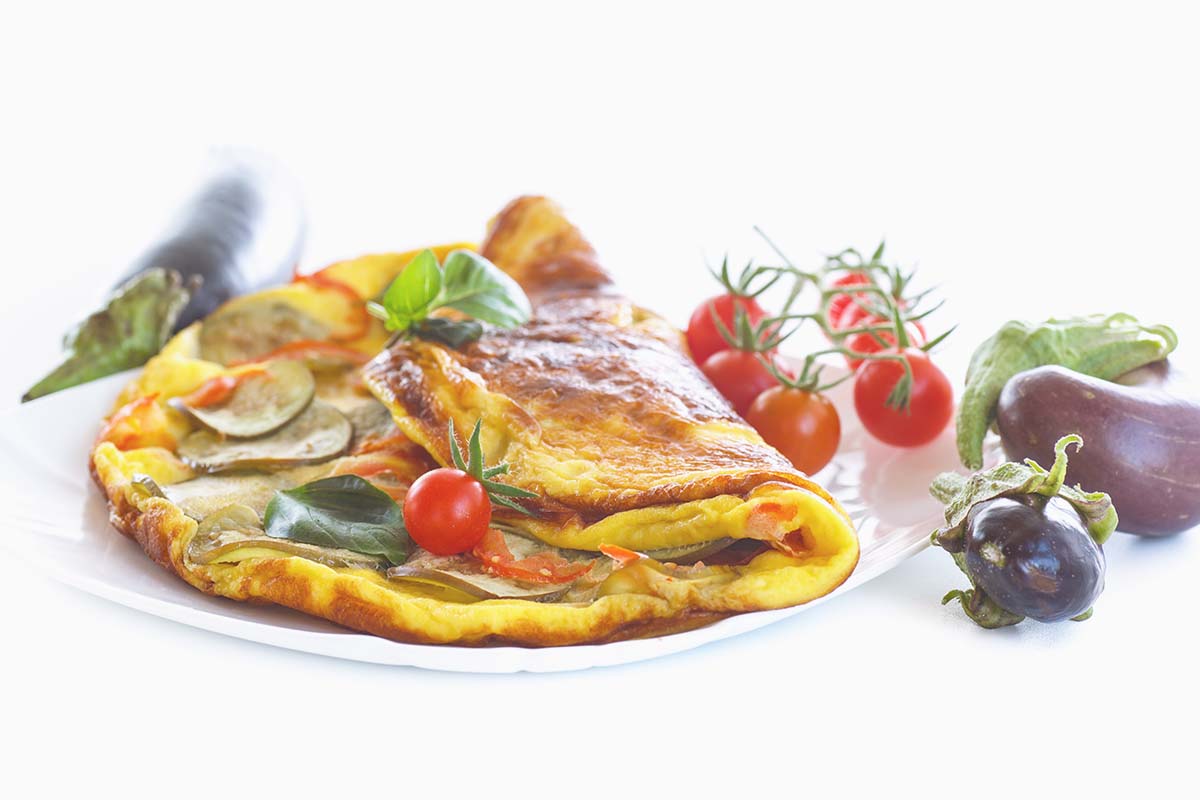
Solely vegetarian meals are no oddity in Armenian cuisine and the famous eggplant dish is a prime example of that. Whether you consider it an appetizer or a main dish, it’s undeniable that a single plate can absolutely end you up with a full stomach. The recipe is ironically simple. You fry as many eggplant slices as you wish and wait until they turn golden brown. Some people love it untouched, others spice it up with grated yogurt, sour cream, chopped walnuts, or even pomegranate seeds.
This dish has been my entire family’s go-to meal for as long as I can remember myself, and honestly, it never disappoints. You will always want twice as much as you have already had.
1. Kalagosh (Qyalagosh)
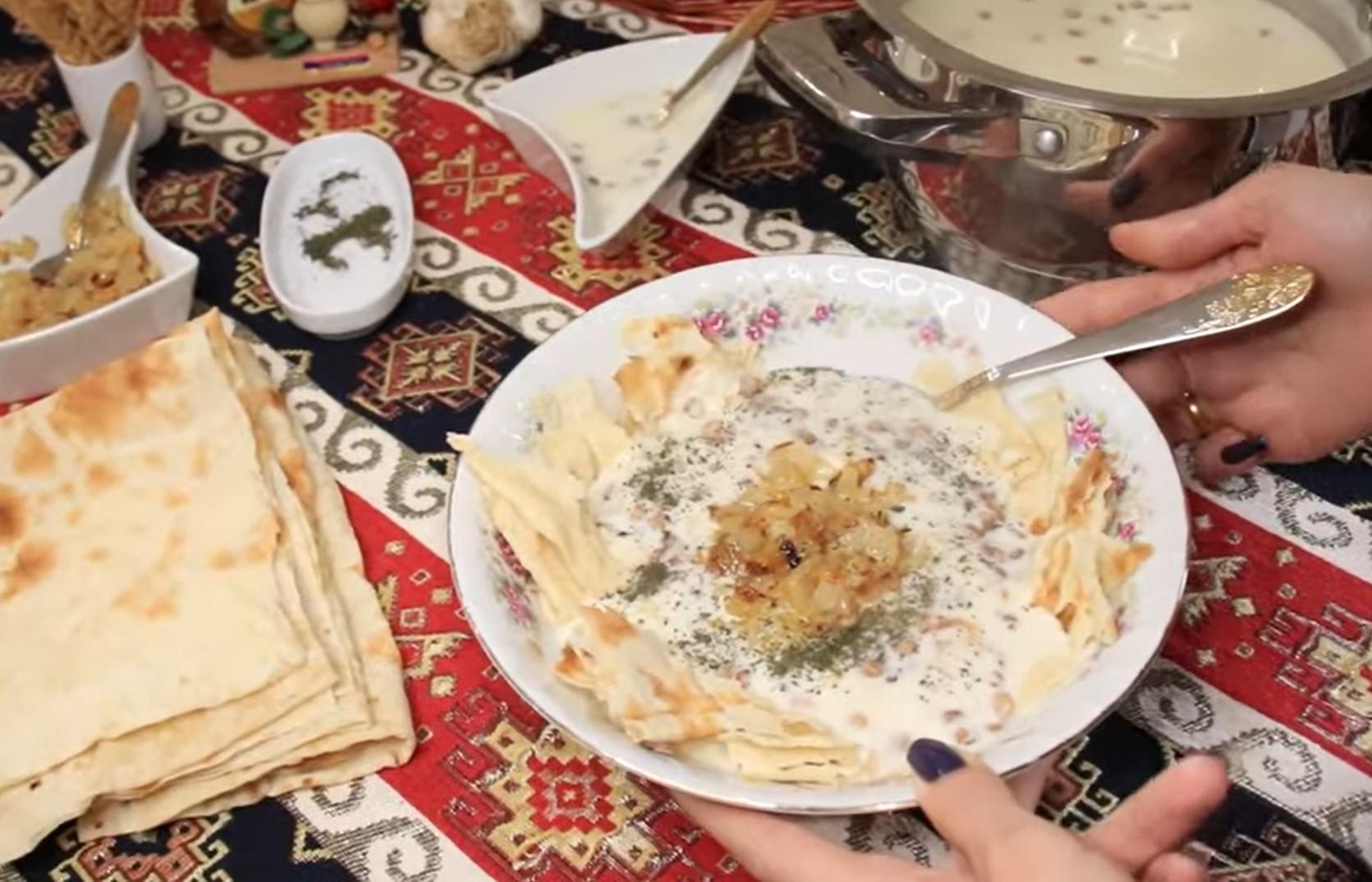
Known by few, but surely worth a try, kalagosh also known as Qyalagosh (arm: Քալագոշ) is a dish mainly found in Armenian villages. More specifically, it’s a yogurt-based soup. After having successfully produced the necessary amount of butter, the remains of the yogurt (matsun) used were dried and stored in the shape of white rolls (choratan, dried sour dairy), which makes them look like tiny snowballs. This substance is liquefied for better taste. Lastly, the dish is seasoned with lentils, lavash, and ghavurma. And the wildest part? Ghavurma as an ingredient has the privilege to be stored during wintertime and is fully capable of preserving food for a whole entire year. Essentially, that is the central reason why the Kyalagosh dish used to be so popular among villagers.
It is worth trying the flavors of Armenia…
I think it must be pretty clear by now that food, tastes, spices and flavours are no joke to Armenians. Their customs, traditions, and lifestyle in general are seasoned, dipped, and almost absorbed by this separate field of art they call cooking. I find it especially cute how most hidden and secret recipes are taken, influenced, or inspired by the elderly and their precious advice.
We could spend hours elaborating on the range of versions a singular dish can have in Armenia and we can most probably tussle about the etymology due to the array of similarities Armenian food has with its neighboring countries. There are hundreds of parallels to draw, but one thing is indisputable. Armenian food as majestic in all senses of the word.







